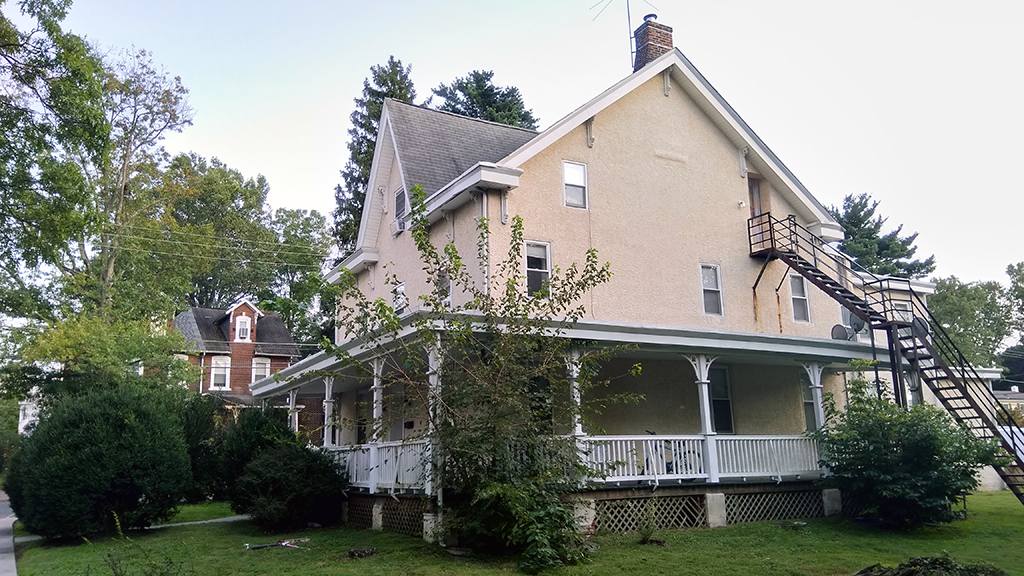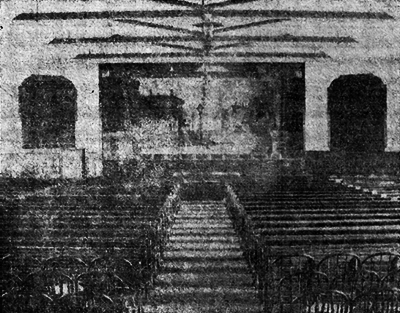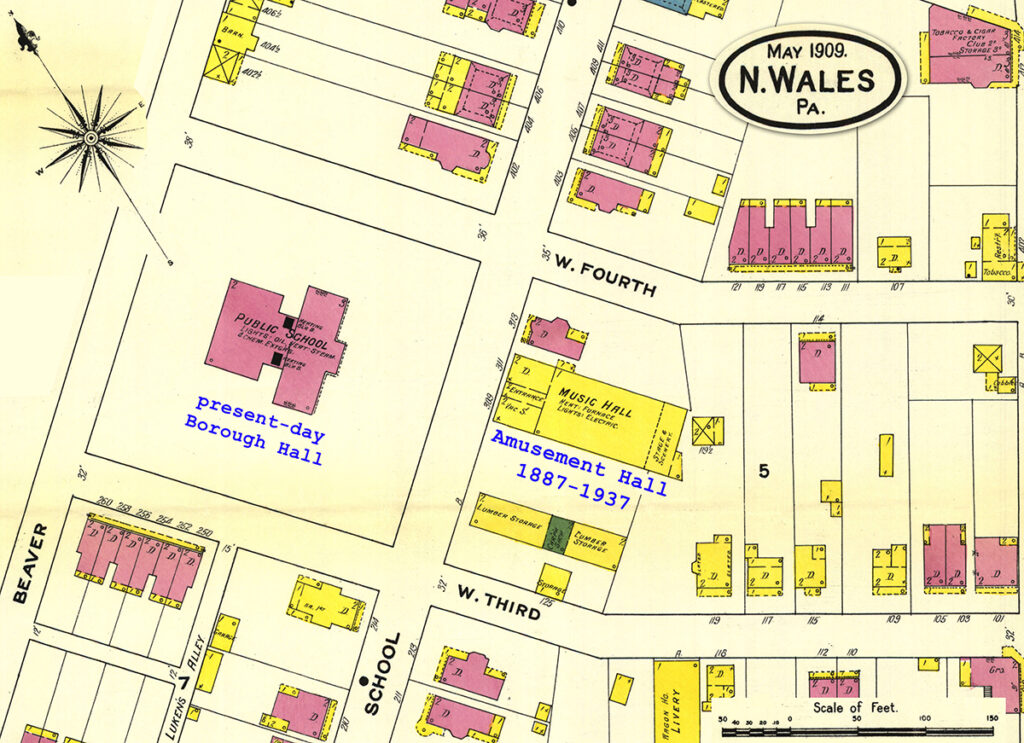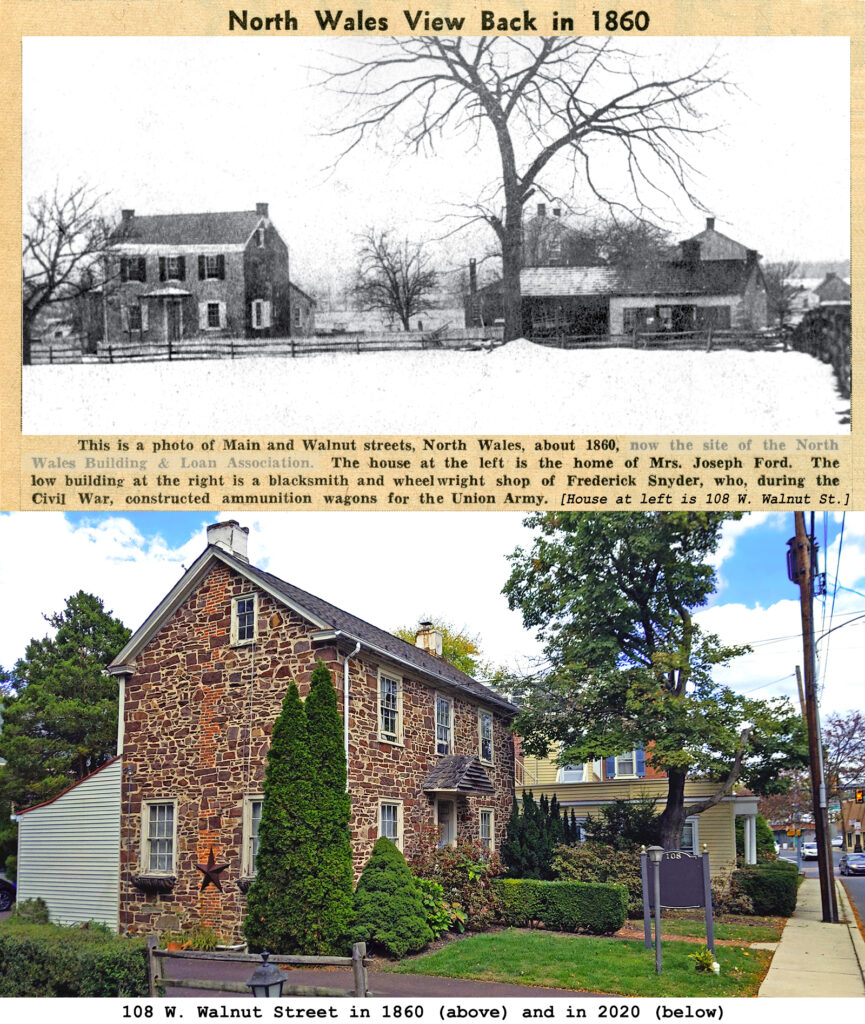Before getting into the history of the village of North Wales after its incorporation as a borough, let us review some more of the history of the territory upon which the town now stands.
The Swartley farm, on which is situated a large portion of the dwellings in the southwest side of the borough, dates back to colonial times, the first mention of it being made in 1702, when, as we have said, Robert John was given a grant of 720 acres. Various subdivisions were made of this tract until 1786, when it was sold by the sheriff. In 1888, after the death of Jacob Swartley, it was cut up into building lots and sold. The borough was enlarged at that time and the greater portion of the farm was included in the borough.
The Swartley farm was a part of what had been known as the Hurst farm, all of which is now covered with dwelling houses. It extended from Main street southwest to a forest. At one time it comprised 134 acres, which was later reduced to 102 and then to 73 acres. The terrain was nearly level, gently sloping westward to the valley of the Wissahickon. The old stone farmhouse and barn was toward the northeast end where is now the corner of Pennsylvania avenue and Shearer street. The old farmhouse is still standing, but greatly altered and enlarged. It is now an apartment house.

The history of this farm goes back to 1786. The tract had belonged to Jacob Weyant before that time, when it was seized and sold at sheriff’s sale by Sheriff Potts who sold 102 acres to Philip Hurst. There was a house on the tract at that time. Later Hurst added twenty acres, bought from Adam Fleck. Philip Hurst lived here for fifty-five years. In 1839 the administrators of Philip Hurst sold the 134 acres to Jacob Swartley and Jacob Shearer $5207. The land then extended for 137 perches (half a mile) along Main street.
Thirty years passed, and Jacob W. Shearer died in July 1869. He was the grandfather of our present [1959] businessman, Abel K. Shearer.
In 1879 the widow of Jacob W. Shearer gave a deed for the tract to Jacob Swartley, and he was the owner until his death in December of 1885. By this time property had greatly advanced in value. At different times portions of the old farm were sold. The old farmhouse, and nine lots adjoining, were sold in 1888 by Mahlon R. Swartley, son of Jacob, to Herman Hamburger, a manufacturer, who had come here in 1879 and opened a factory. The property was owned by the Hamburgers for thirteen years. In 1901 Madge E. Hamburger sold the place to Thomas K. Smith. The next year it was sold to Walter G. Smith, who sold it in 1910 to William R. McDowell for $5300. It then passed through various ownerships until October 1939, when it was purchased by H. LeRoy Jones.
Concerning the earlier colonial history of the entire tract, it may be said that the first owner of the land in the upper portion of Gwynedd township, was Robert Jones, mentioned before, and who lived in a house, built in 1712, a little southwest of the Kneedler Tollgate, which stood at Sumneytown pike and West Point road. At his death in 1732 Jones’s will conveyed much of his land to his son, John, including the site of most of North Wales, with the exception of 300 acres.
A change in the Jones ownership did not come until 1760, when John Jones and his wife sold 186 acres to George Weidner. This land was on the southwest side of the Great Road, or the present Main street. At that time the land on the southwest was owned by Jeptha Lewis and Reese Harry. To the southeast were the lands of Thomas Evans and Samuel Evans. It was bounded on the northeast for 183 perches by the “Great Road to Maxatawny”, and on the upper side by the lands of Mathias Lukens. As we said before, we do not know how long George Weidner owned this farm, but he doubtless lived on the site of the later Swartley farmhouse.
By the time of the close of the Revolutionary War, the property had passed from Weidner’s hands to that of Jacob Weyant, as indicated by the deed dated 1784, when Weyant sold off twenty-nine acres from the southwest part of the farm to William Rex of Gwynedd. As mentioned before, his estate was seized by the sheriff and sold to Philip Hurst.
The Gordon tract, while not within the limits of the borough of North Wales, played an important part in the history of the town. Located at the present-day Parkside Place in Upper Gwynedd Township, we will continue with the Gordon farm history in the next installment [part 4].
This post is sourced from a column entitled Early North Wales: Its History and Its People penned by long-time North Wales resident historian Leon T. Lewis. The article appeared in its original form in the March 24, 1959 issue of the North Penn Reporter.




